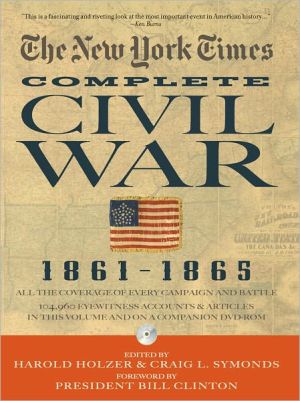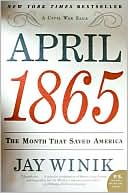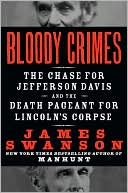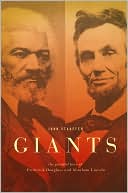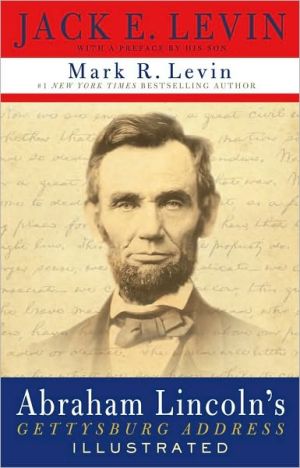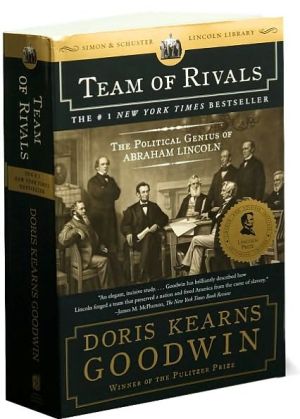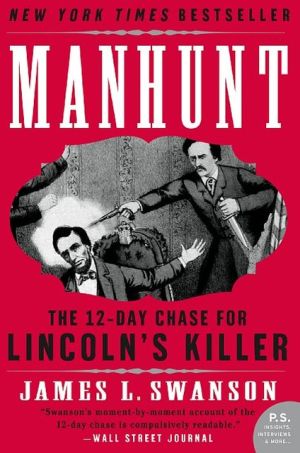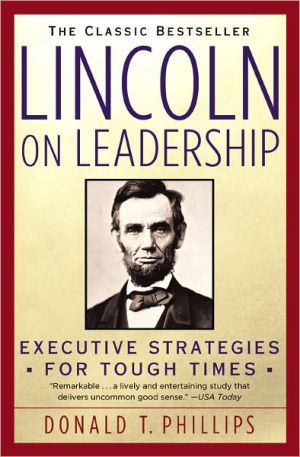Hallowed Ground: A Walk at Gettysburg
“[I]n a larger sense, we can not dedicate—we can not consecrate—we can not hallow—this ground. The brave men, living and dead, who struggled here, have consecrated it, far above our power to add or detract.”\ —President Abraham Lincoln\ James M. McPherson, the Pulitzer Prize–winning author of Battle Cry of Freedom, and arguably the finest Civil War historian in the world, walks us through the site of the bloodiest and perhaps most consequential battle ever fought by Americans.\ The events...
Search in google:
“[I]n a larger sense, we can not dedicate—we can not consecrate—we can not hallow—this ground. The brave men, living and dead, who struggled here, have consecrated it, far above our power to add or detract.”—President Abraham LincolnJames M. McPherson, the Pulitzer Prize–winning author of Battle Cry of Freedom, and arguably the finest Civil War historian in the world, walks us through the site of the bloodiest and perhaps most consequential battle ever fought by Americans. The events that occurred at Gettysburg are etched into our collective memory, as they served to change the course of the Civil War and with it the course of history. More than any other place in the United States, Gettysburg is indeed hallowed ground. It’s no surprise that it is one of the nation’s most visited sites (nearly two million annual visitors), attracting tourists, military buffs, and students of American history. McPherson, who has led countless tours of Gettysburg over the years, makes stops at Seminary Ridge, the Peach Orchard, Cemetery Hill, and Little Round Top, among other key locations. He reflects on the meaning of the battle, describes the events of those terrible three days in July 1863, and places the struggle in the greater context of American and world history. Along the way, he intersperses stories of his own encounters with the place over several decades, as well as debunking several popular myths about the battle itself.What brought those 165,000 soldiers—75,000 Confederate, 90,000 Union—to Gettysburg? Why did they lock themselves in such a death grip across these once bucolic fields until 11,000 of them were killed or mortally wounded, another 29,000 were wounded and survived, and about 10,000 were “missing”—mostly captured? What was accomplished by all of this carnage? Join James M. McPherson on a walk across this hallowed ground as he be encompasses the depth of meaning and historical impact of a place that helped define the nation’s character. USA Today What word in American history resonates more than any other? James McPherson makes a convincing case that the word is Gettysburg in his slim but informative and eloquent book, Hallowed Ground: A Walk at Gettysburg. — Bob Minzesheimer
Day One: July 1, 1863\ We'll begin our tour three miles northwest of the Gettysburg town square, at the intersection of Knoxlyn Road and U.S. Route 30, the historic Chambersburg Pike. Here, on the morning of July 1, were posted the outlying pickets of the Eighth Illinois Cavalry. As the sun burned away the mist, they spotted a column of Confederate infantry marching toward them. At 7:30 A.M., Lieutenant Marcellus Jones rested a breech-loading Sharps carbine on a fence rail and fired at the enemy. It was the first shot in the largest battle ever fought in the western hemisphere.\ Why were these soldiers here, more than one hundred miles north of the Rappahannock River in Virginia, where they had confronted each other until only three weeks earlier? After scrambling up the steep bank on the north side of Route 30 to look at the small "first shot" marker to the left of an abandoned house, let's head southeast on Route 30 almost two miles to the parking lot behind the guide station at the National Park entrance. From there we'll walk a hundred yards south to get away from the traffic noise. Here is a good place to answer the question: What brought these two armies to Gettysburg?\ Those who have watched the electric map presentation at the National Park Visitor Center have learned the apparently paradoxical fact that the Confederates approached Gettysburg from the north and the Union army came up from the south. Having seized the initiative and invaded Pennsylvania, Southern troops got there first while the Army of the Potomac followed cautiously, remaining between the invaders and Washington to the southeast. Thus, when fate brought the armies together at Gettysburg, Union soldiers arrived from the south and southeast and Confederates from the northwest and north.\ The preceding six months had been a low point for the Union cause. On December 13, 1862, the Army of the Potomac, commanded by Major General Ambrose E. Burnside, had attacked General Robert E. Lee's Army of Northern Virginia at Fredericksburg on the Rappahannock. There the Yankees had sustained a disastrous and humiliating defeat. Northern spirits plummeted. "The people have borne, silently and grimly, imbecility, treachery, failure, privation, loss of friends," editorialized the leading Northern magazine, Harper's Weekly, "but they cannot be expected to suffer that such massacres as this at Fredericksburg shall be repeated." When Lincoln heard the news of Fredericksburg, he said, "If there is a worse place than Hell, I am in it."\ Morale in the Army of the Potomac sank to its lowest point during the winter of 1862-63. "The army is tired with its hard and terrible experience," wrote twenty-one-year-old Captain Oliver Wendell Holmes Jr., who was recovering from the second of three wounds he would receive in the war (the third would keep him out of the battle of Gettysburg). "I've pretty much made up my mind that the South have achieved their independence."\ Things would get worse for the North before they got better. At the end of April, a new commander of the Army of the Potomac, Major General Joseph Hooker, launched an offensive at the crossroads hostelry of Chancellorsville, a few miles west of Fredericksburg. After getting in the enemy's rear and gaining a tactical advantage, however, Hooker lost his nerve and yielded the initiative to Lee. The ensuing battle of Chancellorsville, May 1-5, 1863, marked Lee's most brilliant achievement. Facing greatly superior numbers, he divided his army three times in a series of flank and frontal attacks that bewildered Hooker. Although Lee's ablest subordinate, Lieutenant General Stonewall Jackson, was wounded by friendly fire on May 2, the Army of Northern Virginia went on to inflict another humiliating defeat on the enemy.\ Jackson's death from pneumonia (which set in after his wounding) on May 10 tempered the joy in the South produced by Chancellorsville. Nevertheless, confidence abounded that one more Confederate victory in this theater would offset Union successes in Mississippi and win Confederate independence. Lee decided to carry the war into Pennsylvania in a bid to conquer a peace on Northern soil. To the Confederate government in Richmond, Lee presented the dazzling prospect that an invasion of Pennsylvania would remove the enemy threat on the Rappahannock, take the armies out of war-ravaged Virginia and enable the Confederates to supply themselves from the rich Pennsylvania countryside, and relieve the pressure on Confederate armies in the west by compelling Union forces there to send reinforcements to the east. Lee's plan might also strengthen Northern Peace Democrats (so-called Copperheads) in their arguments for an armistice and peace negotiation; discredit Lincoln and his war policies, including the Emancipation Proclamation issued five months earlier; encourage European diplomatic recognition of the Confederacy; and perhaps even capture Harrisburg or Baltimore and hold the city hostage for a cease-fire and negotiations.\ Confederate President Jefferson Davis was dazzled by these prospects. In the post-Chancellorsville aura of invincibility, anything seemed possible for the Army of Northern Virginia. "There never were such men in an army before," wrote Lee in June 1863 as his troops started north. "They will go anywhere and do anything if properly led." After Jackson's death, Lee had reorganized the army from two corps (under Jackson and Lieutenant General James Longstreet) into three corps of three divisions each, commanded by Longstreet, A. P. Hill, and Richard Ewell (who got most of Jackson's old corps). Both Hill and Ewell earned their promotion to corps command with the rank of lieutenant general by their records as successful division commanders under Jackson—though Ewell had only recently returned to the army after losing a leg at Second Manassas the previous August. Major General Jeb Stuart commanded the army's cavalry corps. All of these men except Longstreet were Virginians, as were five of the nine division commanders—a source of complaint and jealousy among some non-Virginians in an army two-thirds of whose soldiers were from states other than Virginia.\ During the second week of June, the Army of Northern Virginia moved north through the Shenandoah Valley toward the Potomac River, keeping the Blue Ridge Mountains between themselves and Union cavalry that probed the mountain gaps to track the enemy. The Northern cavalry gave a good account of itself for almost the first time in this theater, especially at the battle of Brandy Station (near Culpeper, Virginia) on June 9. Some of the best fighting in these cavalry actions was done by a Union division under Brigadier General John Buford, a native of Kentucky whose cousin was a brigadier general in the Confederate army.\ Jeb Stuart's Confederate horsemen had been surprised and roughly handled at Brandy Station. Stuart's ego may have been bruised by the criticism this affair provoked in the South. His daring exploits and accurate scouting reports during the previous year had won Stuart deserved fame. He dressed the part of a dashing cavalier: knee-high boots, elbow-length gauntlets, a red-lined cape with a yellow sash, and a felt hat with pinned-up brim and ostrich-feather plume. After Brandy Station, he was determined to dispel criticism and live up to his reputation by performing some new bold and dramatic deed.\ Two weeks later an opportunity arose. After screening the Confederate infantry's advance northward by defending the Blue Ridge passes from probing Union horsemen, Stuart got permission from Lee to move into Pennsylvania east of the Blue Ridge-South Mountain range, provided he always remained in contact with the infantry through couriers and was capable of rejoining the main body at any time. This Stuart failed to do. Taking his three best brigades, he allowed the northward-slogging Union army to separate him from the Army of Northern Virginia for a full week, depriving Lee of his cavalry "eyes" at a crucial time. That is why the first contact on July 1 at the site of the "first shot" marker occurred between Union cavalry and Confederate infantry advancing without the usual cavalry screen and scouts to determine the enemy's position and strength.\ Nevertheless, the hot days of late June seemed to signify the pinnacle of Confederate success. Ewell's corps, in advance, had bowled over and captured most of a four-thousand-man Union force blocking their way at Winchester, Virginia, and had crossed the Potomac into Maryland and Pennsylvania. One of Ewell's divisions penetrated to the Susquehanna River at Wrightsville, while two others occupied Carlisle and threatened Harrisburg and the Pennsylvania bridge over the Susquehanna, the destruction of which was one of Lee's goals in the campaign. This initial success seemed to mark Ewell as a worthy successor to Jackson. He even rivaled the famously eccentric Jackson in eccentricity, with an ulcer-induced diet of hulled wheat in milk and an egg yolk. He had a beaked nose and a habit of cocking his head to one side, which reminded observers of a bird. Ewell had recently married a widow, whom he absentmindedly referred to as "Mrs. Brown."\ While Ewell's divisions were threatening Harrisburg and Wrightsville on June 28, Lee, with the rest of the army, was at Chambersburg, twenty-five miles northwest of Gettysburg. The campaign seemed a smashing success so far. The invaders stripped the countryside and towns of all the cattle, horses, shoes, and food they could find. Pennsylvanians were in a panic. Contrary to time-honored legend, Lee's orders against pillage of civilian property were honored in the breach by many soldiers. "The wrath of southern vengeance will be wreaked upon the pennsilvanians & all property belonging to the abolition horde which we cross," wrote a Virginian. A North Carolina soldier confessed in a letter home that "our men did very bad in MD. and Penn. They robed every house...not only of eatables but of everything they could lay their hands on. They tore up dresses to bits and broke all the furniture."\ All that remained was to find the Army of the Potomac and whip it. Despite the troubling absence of Stuart, which left him without accurate intelligence about the enemy's whereabouts, Lee exuded confidence. According to one of his subordinates, Lee said that when he located the Army of the Potomac, "I shall throw an overwhelming force on their advance, crush it, follow up the success, drive one corps back on another, and by successive repulses and surprises create a panic and virtually destroy the army. [Then] the war will be over and we shall achieve the recognition of our independence."\ This turned out to be the pride that goeth before a fall. The Army of the Potomac was coming, with more speed and elan than Lee realized. That army had a new commander. When the Confederates entered Pennsylvania, Lincoln saw an opportunity as well as a threat, an opportunity to cut off and cripple the enemy far from his home base. The president told Secretary of the Navy Gideon Welles that "we cannot help beating them, if we have the man." But Lincoln became convinced that Hooker was not the man. The general had begun to fret that the enemy outnumbered him, that he needed reinforcements, that the government was not supporting him. To Lincoln these complaints sounded as though Hooker was looking for an excuse not to fight. When the general submitted his resignation over a dispute about the Union garrison at Harpers Ferry, Lincoln accepted it on June 28 and promoted a surprised Major General George Gordon Meade to command.\ Meade was the fourth commander of the Army of the Potomac. He had compiled a solid if not brilliant record as a division commander, and he had not taken part in the cliquish internecine rivalries that had plagued the officer corps of that army. Meade's testy temper and large, piercing eyes crowned by a high forehead caused one soldier to describe him as "a God-damned old goggle-eyed snapping turtle." But Meade's tactical skills, including the effective use of terrain and reserves, would play a large part in the coming battle.\ As the Army of the Potomac moved north to confront the invaders, its morale rose with the latitude. Civilians in western Maryland and southern Pennsylvania cheered them, in contrast to the hostile curses they were accustomed to hearing in Virginia. "Our men are three times as enthusiastic as they have been in Virginia," wrote a Union surgeon. "The idea that Pennsylvania is invaded and that we are fighting on our own soil, proper, influences them strongly. They are more determined than I have ever before seen them."\ These soldiers had been toughened to a flinty self-reliance in earlier campaigns under bumbling leaders. They "have something of the English bull-dog in them," wrote a Massachusetts officer. "You can whip them time and again, but the next fight they go into, they are as full of pluck as ever....Some day or other we shall have our turn."\ That day was coming soon. On the night of June 28, a civilian spy employed by General Longstreet brought word to Lee and Longstreet in Chambersburg that the Army of the Potomac was concentrated just south of the Pennsylvania border and was moving north. Chagrined that he had not learned this information from Stuart, Lee was nevertheless convinced that he must act quickly lest the enemy get between his divided forces. He sent couriers to recall Ewell's divisions from Wrightsville and Carlisle. Meanwhile, Major-General Henry Heth's division of A. P. Hill's corps marched at dawn toward Gettysburg on the Chambersburg Pike, where at 7:30 they encountered Lieutenant Marcellus Jones and his advanced picket post.\ This confrontation introduces the first of many supposed "myths" about Gettysburg that continue to provoke arguments to this day. Generations of historians—and battlefield guides—have said that the advance brigade of Heth's division was heading to Gettysburg to find a rumored supply of shoes in town. Young people especially are captivated by the story that the battle of Gettysburg started because of shoes. Recently, however, some historians have debunked this anecdote as a myth. There was no shoe factory or warehouse in Gettysburg, they point out; the twenty-two shoemakers listed in the 1860 census as living in Gettysburg were barely sufficient to make or repair the footwear worn by county residents. And if there had been a surplus of shoes in town, they would have been cleaned out by Brigadier General John Gordon's brigade of Major General Jubal Early's division when they came through Gettysburg five days earlier.\ The shoe story, claim these historians, was concocted by General Heth (pronounced Heath) to explain why he blundered into a firefight contrary to Lee's orders not to bring on a battle until the army was concentrated. Heth said that he thought the Union pickets he encountered on the Chambersburg Pike were merely local militia who could be brushed aside, so he kept going to "get those shoes."\ The revisionists have made one good point: there were no shoes in Gettysburg except those worn by the inhabitants still in town (many had fled). But that does not necessarily discredit the shoe story. The Confederates may well have thought there were shoes; several of them later said so. In any case, the anecdote serves an important purpose in that it illustrates that the battle of Gettysburg began as a "meeting engagement," or "encounter engagement." Neither commander intended to fight at Gettysburg; the battle built up step by step from that first encounter on the Chambersburg Pike. Let us concede that the shoe story can neither be proved nor disproved; let us follow the current fashion and call Heth's advance a "reconnaissance in force" to probe toward the enemy; the end result was the same.
\ The New York TimesFor 20 years James M. McPherson has been conducting private tours of the Gettysburg battlefield. Hallowed Ground puts such an expedition on paper. — Raye Snover\ \ \ \ \ The Los Angeles TimesOne could ask for no better guide. McPherson may be the best-known living historian of the American Civil War. — John Rhodehamel\ \ \ USA TodayWhat word in American history resonates more than any other?James McPherson makes a convincing case that the word is Gettysburg in his slim but informative and eloquent book, Hallowed Ground: A Walk at Gettysburg. — Bob Minzesheimer\ \ \ \ \ Publishers WeeklyThe country's most distinguished Civil War historian, a Pulitzer Prize winner (for Battle Cry of Freedom) and professor at Princeton, offers this compact and incisive study of the Battle of Gettysburg. In narrating "the largest battle ever fought in the Western Hemisphere," McPherson walks readers over its presently hallowed ground, with monuments numbering into the hundreds, many of which work to structure the narrative. They range from the equestrian monument to Union general John Reynolds to Amos Humiston, a New Yorker identified several months after the battle when family daguerreotypes found on his body were recognized by his widow. Indeed, while McPherson does the expected fine job of narrating the battle, in a manner suitable for the almost complete tyro in military history, he also skillfully hands out kudos and criticism each time he comes to a memorial. He praises Joshua Chamberlain and the 2oth Maine, but also the 14oth New York and its colonel, who died leading his regiment on the other Union flank in an equally desperate action. The cover is effective and moving: the quiet clean battlefield park above, the strewn bodies below. The author's knack for knocking myths on the head without jargon or insult is on display throughout: he gently points out that North Carolinians think that their General Pettigrew ought to share credit for Pickett's charge; that General Lee's possible illness is no excuse for the butchery that charge led to; that African-Americans were left out of the veterans' reunions; and that the kidnapping of African-Americans by the Confederates has been excised from most history books. This book is a very good thing in a remarkably small package. (May) Copyright 2003 Reed Business Information.\ \ \ \ \ Library JournalMcPherson's moving and compelling description of the historic Gettysburg battlefield is a written version of the Princeton professor's walking tours with his students. A Pulitzer Prize-winning expert on the Civil War (Battle Cry of Freedom), he leads the reader with ease and familiarity through the physical and personal landscape of this turning point in U.S. history. The text is brief but manages to be comprehensive in its overview of the three-day battle-the bloodiest in our history-while including fascinating stories and refuting persistent legends. McPherson writes in a conversational tone as he describes the atmosphere of the site and what Gettysburg has come to mean. He offers perspective on how the surroundings would have appeared at the time-some wooded areas were previously cleared and some present-day fields used to be orchards in 1863. Specific street directions are provided, and the author adds informative background on several individual monuments and markers. This format is equally adaptable for a reader touring the grounds in person or in an armchair at home. Recommended for all libraries with a Civil War collection.-Elizabeth Morris, formerly with Otsego Dist. P.L., MI Copyright 2003 Reed Business Information.\ \ \ \ \ School Library JournalAdult/High School-McPherson focuses on the period July 1-3, 1863, and explains why readers should know about the battle 140 years later. The book is concise, sprightly, and full of personality-both McPherson's and the participants' in the conflict. A prologue and epilogue flank the three chapters on the battle (each covering one day), relating why it happened and what followed. The author walks readers through Gettysburg from beginning to end, telling a story of simple personal decisions that had a global impact. The importance of the battle is elucidated in Lincoln's Gettysburg Address. When readers have finished this book, the only way they can know Gettysburg better is by going there.-Hugh McAloon, formerly at Prince William County Public Library, VA Copyright 2003 Reed Business Information.\ \ \ \ \ Kirkus ReviewsCelebrated Civil War historian McPherson (Fields of Fury, 2002, etc.) holds our hands, points our heads, and evokes awe-ful and sanguinary images of July 1863 in Gettysburg, Pennsylvania. Like many other entries in the Crown Journeys series, the text is brief, lucid, and learned. McPherson (History/Princeton) begins with an allusion to Lincoln’s Gettysburg Address and ends with its full text. An unabashed champion of the site’s importance--"More than any other place in the United States," he declares, "this battlefield is indeed hallowed ground"--the author knows this ground intimately and has conducted uncountable tours there. He educates, even inspires with fluid ease. We learn along our vicarious walk that the battlefield comprises some ten square miles, that the town was only 75 miles north of the nation’s capital and had a population of roughly 2,400 in 1863, that some 4,000 acres now comprise the park. We learn as well that the total number of American casualties there over three days (50,000 or so) is tenfold the number on D-day. McPherson devotes a chapter to each of the battle’s three days, beginning with the first shot on July 1 and ending with Lee’s escape. (The author reminds us that nearly two years of fighting remained after Gettysburg.) McPherson’s unsurpassed scholarship enables him to debunk many myths: blue and gray did not share Spangler’s Spring, he states, and there was probably not a huge supply of shoes in town to attract the footsore Confederates. Like other military historians, he is sometimes romantic, honoring rather than analyzing, and he needs to re-check the meaning of Gertrude’s line to Hamlet about a protesting lady. More often, though, he frames his soundinsights in perfect sentences, writing about one prevaricating memoirist, for example, "His sword was mightier than his pen--or at least more truthful." A leisurely walk through a former inferno with a most eloquent Virgil. (4 maps, not seen)\ \

